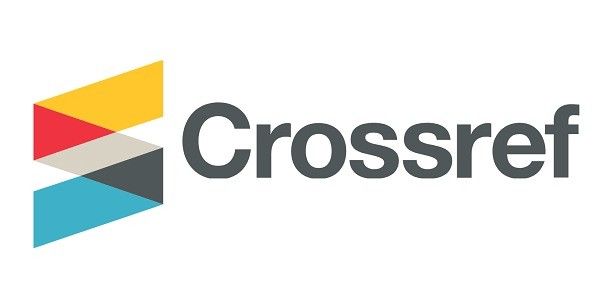Abstract
In 2021, Indonesia participated in the London Design Biennale, focusing on the theme of Resonance. The pavilion's response centred around public housing as an uncanny site, examining the psychological barriers faced by evicted communities during their transition to public housing. This study provides a conceptual analysis by exploring how the uncanny aspects of the occupants' experiences are expressed in installation using the illusory interior as a spatial metaphor. Through practice-led research, utilising ethnographic surrealism and narrative inquiries, data was gathered and translated into artistic mediums through various experiments. The study identifies several factors contributing to the uncanny sensation among public housing occupants, based on the occupants' experiences in public housing in Rancacili (Bandung) and Penjaringan (Jakarta), such as the shift from horizontal to vertical living, inadequate unit design, the absence of communal spaces, and a lack of ownership. The pavilion design attempts to integrate design theory and art practice, showcasing how installation art can express interiority within built spaces and extend it into installation art. Here, the uncanny acts as a methodological framework for critiquing space and transforming interiority into tangible forms by interpreting the actual conditions using installation art as a medium.
Publication Date
7-25-2023
References
Adorno, T. W. (2001). Minima moralia: Reflexiones desde la vida dañada [Minima moralia: Reflections on a damaged life](3rd ed., J. C. Mielke, Trans.). Taurus. (Original work published 1951)
Atmodiwirjo, P., & Yatmo, Y. A. (2018). Interiority as relations. Interiority, 1(2), 87–90. https://doi.org/10.7454/in.v1i2.40
Banerjee, S. (2018). Performing the uncanny: Psychoanalysis, aesthetics and the digital double. In S. Whatley, R. K. Cisneros, & A. Sabiescu (Eds.), Digital echoe : Spaces for intangible and performance-based cultural heritage (pp. 31–56). Palgrave McMillan.
Bishop, C. (2005). Installation art. Tate Publishing.
Bourdieu, P. (1992). The logic of practice (R. Nice, Trans.). Stanford University Press. (Original work published 1980)
Cardwell, R. A. (1989). Beyond the mirror and the lamp: Symbolist frames and spaces. Romance Quarterly, 36(3), 271–280. https://doi.org/10.1080/08831157.1989.9932630
Comaroff, J., & Ker-Shing, O. (2013). Horror in architecture. ORO Editions.
D'Arcy-Reed, L. (2020). Exposing the unconscious through the para-architectural photo-essay and prose. Architecture and Culture, 8(2), 215–235. https://doi.org/10.1080/20507828.2020.1740961
Dincer, D., Brejzek, T., & Wallen, L. (2019). Designing the threshold: A close reading of Olafur Eliasson's approach to 'inside' and 'outside.' Interiority, 2(1), 43–61. https://doi.org/10.7454/in.v2i1.48
Direktorat Jenderal Cipta Karya. (2016). Pedoman umum program kota tanpa kumuh. Kementrian Pekerjaan Umum dan Perumahan Rakyat [PUPR]. https://jdih.pu.go.id/internal/assets/assets/produk/SEDitjenPUPR/2016/05/SE%20DJCK%20No%2040%202016%20KOTAKU.pdf
Evans, S. (2010). The unsettling, urban uncanny: The case of secured settlements. Image & Narrative, 11(3), 111–121.
Freud, S. (1955). The uncanny. In J. Strachey (Ed. & Trans.), The standard edition of the 53 complete psychological works of Sigmund Freud (Vol. XVII, pp. 219–256). Hogarth Press. (Original work published 1919)
Gineprini, L. (2022). The uncanniness of the ordinary: Rethinking the uncanny within aesthetics. In V. Moura & C. Vaughan (Eds.), Proceedings of the European Society for Aesthetics (Vol. 14, pp. 87–99). The European Society for Aesthetics. https://www.eurosa.org/proceedings/latest-volume/
Gosetti-Ferencei, J. A. (2005). Trompe l’oeil and the mimetic tradition in aesthetics. In A. T. Tymieniecka (Ed.), Human creation between reality and illusion (pp. 79–94). Springer.
Groys, B. (2006). Ilya Kabakov: The man who flew into space from his apartment. Afterall Books.
Herman, D. (2000). [Review of the book Towards a 'natural' narratology, by M. Fludernik]. Language,76(1), 199–200. https://doi.org/10.2307/417416
Hillier, J. (1999). Editorial: Habitus—a sense of place. Urban Policy and Research,17(3), 177–178. https://doi.org/10.1080/08111149908727803
Huskinson, L. (Ed.). (2016). The urban uncanny: A collection of interdisciplinary studies. Routledge.
Ionescu, V. (2018). The interior as interiority. Palgrave Communications, 4, Article 33. https://doi.org/10.1057/s41599-018-0088-6
Judice, A., Judice, M., & Koskinen, I. (2015). Enriching ethnography in marginalized communities with surrealist techniques. Ethnographic Praxis in Industry Conference Proceedings, 2015(1), 119–131. https://doi.org/10.1111/1559-8918.2015.01044
Kwon, M. (1997). One place after another: Notes on site specificity. In J. J. Gieseking, W. Mangold, C. Katz, S. Low & S. Saegert (Eds.), The people, place, and space reader (pp. 85–110). Routledge.
Lewis, T., & Cho, D. (2006). Home is where the neurosis is: A topography of the spatial unconscious. Cultural Critique, 64, 69–91. https://www.jstor.org/stable/4489258
McShane, M. C. (2000). Exquisite corpses: Representations of violence in the collective surrealist unconscious. Paroles Gelées, 18(2). https://doi.org/10.5070/pg7182003113
Miftah. (2017, October 16). Program Kota Tanpa Kumuh (Kotaku) mulai direalisasikan di Kota Bandung. Pemerintah Kota [PEMKOT] Bandung. https://www.bandung.go.id/news/read/4165/program-kota-tanpa-kumuh-kotaku-mulai-direalisasikan-di-kota-bandung
Mukherjee, A. (2018). Slums and the postcolonial uncanny. In E. Boehmer & D. Davies (Eds.), Planned violence (pp. 87–104). Palgrave Macmillan. https://doi.org/10.1007/978-3-319-91388-9
Nash, A., Geck, K., & Miller, A. (2021). Virtual interiorities. Interiority, 4(2), 207–222. https://doi.org/10.7454/in.v4i2.153
Parsons, A. (2009). Narrative environments: How do they matter? Rhizomes, 19, 1–31.
Rahimi, S. (2013). The ego, the ocular, and the uncanny: Why are metaphors of vision central in accounts of the uncanny? International Journal of Psychoanalysis, 94(3), 453–476. https://doi.org/10.1111/j.1745-8315.2012.00660.x
Rendell, J. (2006). Art and architecture: A place between. Bloomsbury Publishing.
Signore, V. (2015). Who said performative? Towards a critical posture. In S. Wolfrum & N. Frhr. v. Brandis (Eds.), Performative urbanism: Generating and designing urban space (pp. 168–179). Jovis.
Snow, M. (2016). Into the abyss: A Study of the mise en abyme. London Metropolitan University.
di Stefano, E. (2019). From familiar to uncanny: The aesthetics of atmospheres in domestic spaces. SAJ - Serbian Architectural Journal, 11(3), 415–426. https://doi.org/10.5937/saj1903415d
Steiner, H. (2010). On the unhomely home: Porous and permeable interiors from Kierkegaard to Adorno. Interiors: Design, Architecture, Culture, 1(1), 133–148. https://doi.org/10.2752/204191210791602212
Stevens, Q. (2006). Betwixt and between: Building thresholds, liminality and public space. In K. A. Franck & Q. Stevens (Eds.), Loose space: Possibility and diversity in urban life (pp. 73–92). Routledge.
Vahdat, V. (2022). Meta-virtuality: Strategies of disembeddedness in virtual interiorities. Journal of Interior Design, 48(1), 1–14. https://doi.org/10.1111/joid.12230
Vaux, D. E., & Wang, D. (Eds.). (2020). Research methods for interior design: Applying interiority. Routledge.
Widyaevan, D. (2021). The invisible: Free the space! Pavilion Indonesia in London Design Biennale 2021 [Exhibition catalogue].
Wood, G. (Ed.). (2007). Surreal things: Surrealism and design. Victoria & Albert Museum.
Submitted Date
2023-03-29
Accepted Date
2023-07-15
First Page
201
Last Page
224
Recommended Citation
Widyaevan, D. A. (2023). Illusory Interior: Public Housing as Uncanny Site. Interiority, 6 (2), 201-224. https://doi.org/10.7454/in.v6i2.323
Creative Commons License

This work is licensed under a Creative Commons Attribution-NonCommercial 4.0 International License
Author(s) retain the copyright of articles published in this journal, with first publication rights granted to Interiority.






